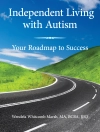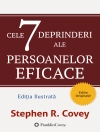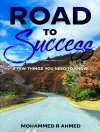At a time when expectations and assumptions about the delivery of services to children and adolescents are being reconfigured – for example, around the rights of children and adolescents as young citizens – adults are seeking to ensure that they deliver services in creative and empowering ways, ensuring that the opinions of young people are actively solicited and encouraged. Action methods – communication methods using the body as well as speech – provide non-threatening ways of communicating which can be understood by children of all ages and from many cultures.
This book places action methods in a theoretical, technical and political framework and documents examples of good practice. Discussion of the application of action methods to work with young people focuses on differing issues and populations, for example children and adolescents who face life-threatening illnesses, or those involved in peer counselling in schools. Contributions from several different countries emphasise the wide potential of action methods for use with young people. This book provides a comprehensive and wide-ranging resource for those interested in exploring and understanding why action methods are particularly useful when working with young people.
Inhoudsopgave
Part I: The Curtain Rises. 1. Warming up: Introducing action methods and work with young people, Anne Bannister and Annie Huntington. 2. Setting the scene: Child development and the use of action methods, Anne Bannister. 3. Pause for thought: Action or stillness in therapeutic work with young people? Sue Jennings and Andy Hickson. Part II: Action across organisational divides: Health, education and the juvenile justice system. 4. Freeing the self: Psychodrama techniques with children and adolescents who stammer, Gail Smith. 5. Where there is drama there can also be art: Using creative media with children living with life threatening illness, Kate Kirk. 6. Can we do something? Young people using action methods to support each other in school, Nick Luxmoore. 7. Let’s make a bridge!: Working in action with autistic children, Sandra Grieve and Ioanna Gagani. 8. Providing dance movement therapy within a mainstream school, Sue Curtis. 9. Psychodrama with ‘at risk’ youth: A means of active engagement, Erica Hollander. 10. Drago-drama: Archetypal sociodrama with adolescents, Mario Cossa. Part III: Action methods and child maltreatment. 11. The use of action methods in the treatment of the attachment difficulties of long-term fostered and adopted children, Paul Holmes. 12. The Yellow Brick Road: Helping children and adolescents to recover a coherent story following abusive family experiences. Facilitated contact with birth parents using the Therapeutic Spiral Model, Chip Chimera. 13. Touch me – NO! Creative therapies with young sexually abused children, Cristina Citron. Part IV: The Curtain Falls. 14. Resisting change: What stops us acting for young people? Annie Huntington. References. Index.
Over de auteur
Mario Cossa is a certified Trainer, Educator and Practitioner in Psychodrama, and Fellow of the American Society for Group Psychotherapy and Psychodrama. He is a leading Drama Therapist and Theatre Educator, specialising in work with adolescent groups and trauma survivors, who has conducted training workshops in psychodrama, action methods and applied drama all over the world.












